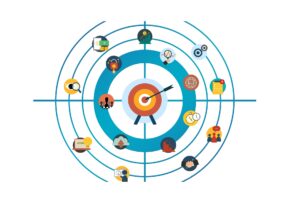Why Is Technology Good For Education?
Technology has become an integral part of our daily lives, and education is no exception. With the rise of digital devices and internet connectivity, technology has brought significant changes to the field of education.
In this blog post, we will explore the benefits of technology in education and its impact on modern-day learning.
Both teachers and students now depend heavily on technology in the classroom. It has completely changed the way we learn and given students new chances to interact with knowledge, ideas, and one another.
Students can learn at their own pace, collaborate with their peers, and get access to a variety of knowledge outside of the four walls of their classrooms with the aid of technology.
Table of Contents
Here Is The Reason Why Technology Is Good For Education

1. Access to Information
One of the most significant benefits of technology in education is its ability to provide students with access to vast amounts of information. With just a few clicks, students can access digital libraries, online databases, and educational websites that offer resources on almost any subject.
This abundance of information can assist students in broadening their knowledge outside the classroom and developing a more in-depth awareness of the world around them.
Online libraries, for example, JSTOR, Project MUSE, and Google Scholar provide thousands of academic articles and research papers that students can easily access.
Khan Academy, Coursera, and Udemy are educational websites that provide free or low-cost online courses in a variety of areas ranging from math and physics to history and literature.
All of these digital resources make learning more accessible and easy for students, especially those who may not have access to traditional educational materials.


2. Personalized Learning
Personalized learning is another significant benefit of technology in education. Every student learns differently, and technology can help cater to individual needs.
Students can use online learning platforms to access personalized learning resources such as movies, quizzes, and interactive activities that are tailored to their learning styles. This enables students to learn at their own pace and concentrate on the areas in which they need to develop.
Teachers can develop customized courses that respond to the needs of individual students using online learning systems such as Moodle, Blackboard, and Canvas.
These systems enable professors to provide tailored feedback to students, track their progress, and provide extra materials as needed. Students can also access these platforms from any location, making it easier for them to learn and study on the go.
Drag & Drop Sales Funnel Builder for WordPress

3. Collaboration and Communication
Technology has also improved students’ ability to collaborate and communicate with their peers and teachers. Students can use online discussion forums to exchange ideas, ask questions, and collaborate on projects even if they are not physically in the same location. This promotes a sense of community and may increase student participation.
Students can use online applications like Google Docs, Dropbox, and Trello to collaborate on projects in real time, share notes, and organize their work.
Video conferencing platforms such as Zoom, Skype, and Google Meet allow students to participate in virtual classrooms and interact with their teachers and classmates. These online tools make it easier for students to connect and communicate, even when they are physically distant.

4. Interactive Learning
Learning can also be made more interesting and interactive with the use of technology. Students can learn through hands-on experiences and visualizations with technologies like educational games, simulations, and virtual reality, which can aid increase their recall and understanding of complicated subjects.
Educational games like Minecraft Education and Kahoot!, for example, make learning more enjoyable and participatory. PhET Interactive Simulations, for example, allow students to conduct virtual experiments to investigate scientific phenomena and concepts.
Immersive learning experiences can also be provided by virtual reality, allowing students to see historical places, explore outer space, or learn about the human body in ways that traditional means cannot.

5. Flexibility and Convenience
Another advantage of education technology is its capacity to give flexible and easy learning options. Students can now learn from anywhere and at any time thanks to the rise of online courses and distance learning programs, making education more accessible to a wider audience.
Online courses, such as those provided by Coursera and Udemy, allow students to learn new skills and earn certificates from the comfort of their own homes.
Distance learning programs, such as those provided by Open University and Arizona State University, enable students to acquire degrees through online classes and remote study without the need to visit a physical campus.
6. Increased Productivity and Efficiency
Technology can also boost educational productivity and efficiency. Teachers can use digital technologies to streamline their lesson preparation and grading procedures, saving time and energy that can be focused on other aspects of the classroom.
Teachers can use tools like Google Classroom, Microsoft Teams, and Schoology to design and manage assignments, connect with students, and provide comments on student work.
These systems can also automate specific processes, such as grading multiple-choice quizzes, allowing for a more efficient grading procedure.


Conclusion
To summarize, technology has greatly aided the field of education, from enabling access to massive amounts of knowledge to developing tailored learning experiences, enhancing cooperation and communication, and making learning more engaging and interactive.
It has also made education more accessible and easy for students, allowing them to learn from any location and at any time.
While technology cannot replace conventional teaching techniques, it can enhance the learning experience for both teachers and students.
As we can see, technology has transformed education in numerous ways, creating new opportunities and improving the learning experience.
It is critical to embrace technology and investigate how it may be utilized to better education, whether you are a student, teacher, or parent.
Consider taking an online course, experimenting with digital tools, or asking your school to use more technology in the classroom.
We can create a brighter future for education and prepare the next generation for success in the digital age by working together.

Disclosure: I may receive affiliate compensation for some of the links below at no cost to you if you decide to purchase a paid plan. You can read our affiliate disclosure in our privacy & policy. This site is not intending to provide financial advice. This is for entertainment only.








